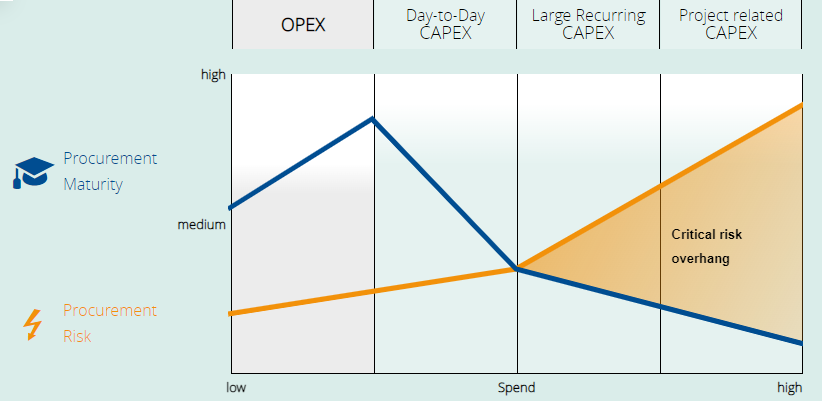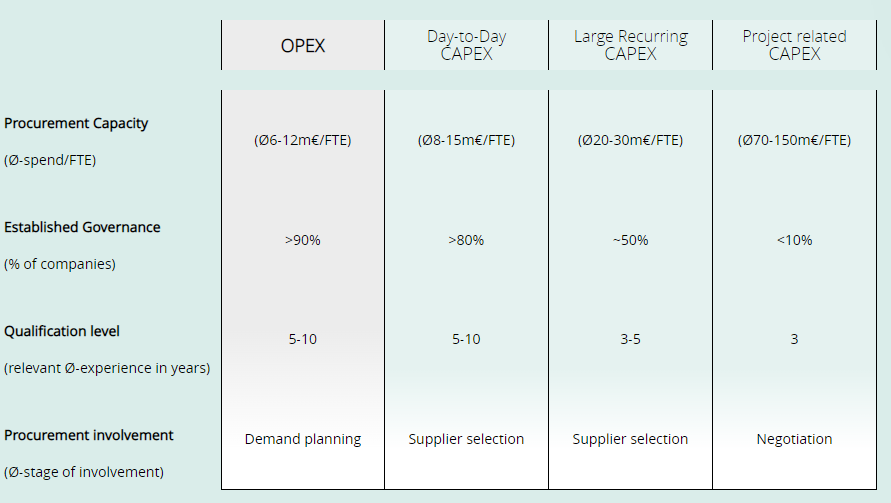Procurement: More Than Commercial Knowledge
The role of procurement has changed significantly in recent decades – away from the purchasing clerk, toward the strategic entity. Successful procurement involves not only obtaining an overview of the procurement processes themselves, but also the upstream and downstream processes. Buyers are used to thinking across departments and processes, identifying potential risks and countering them in good time. Using methods such as cost breakdowns and TCO considerations, buyers ensure transparency and in-depth analyses, providing the necessary background knowledge to plan budgets, processes, and timeframes.
Practical examples:
A company was planning underground transport facilities as part of a large construction project. After installing the rail tracks, bridges and tunnels, it became apparent that only one provider’s trains could be considered because the clearance heights and widths had already been fixed. Involving procurement in the planning process early on could have avoided this.
Another typical example is store layout in retail, initially often a design-driven process whereby procurement can check whether the design department’s drafts can actually be implemented in the budget from the outset. In addition, procurement can point out the bundling and standardization opportunities from the beginning, allowing the design department to plan ahead.
Specifications prepared across departments, coupled with detailed process planning and scheduling, are prerequisites for a successful procurement process. In this way, procurement can determine the optimal purchasing levers for the requirements of the tendering process, the negotiations and, ultimately, the supplier contracts.
Avoiding Budget and Time Overruns
Active risk control by procurement is crucial for completing CAPEX projects successfully within cost and on time, while maintaining optimal quality. Only if it succeeds in anticipating existing risks, balancing them, and counteracting the threat of undesirable developments does the project remain within the planned framework. CAPEX projects in particular that span a long period of time, such as in plant construction or the building industry, are exposed to constant risk, whether because of political or regulatory constraints, natural phenomena, or supplier circumstances. However, uncertainties must be taken into account in the planning. In risk management, procurement acts as a navigator and shows ways to avoid, or at least reduce, these risks.
In addition, involving procurement has another advantage in that it oversees the whole process. Furthermore, it can directly negotiate services linked to capital goods. Additional savings can often be achieved by tendering out service packages.
The following practical example illustrates the consequences when this does not happen:
As part of an extensive construction project, sliding doors were procured and installed as a CAPEX requirement, with the construction department taking responsibility for this. However, they did not take into consideration that these doors would need regular maintenance after installation. Procurement was responsible for securing the maintenance contracts, but was now severely restricted because it was only possible to negotiate with the appointed supplier (lock-in effect). Considerably better terms could have been obtained if the purchase of the sliding doors and the maintenance work had been negotiated immediately as an entire order.





 Procedure
Procedure
 Success Factors
Success Factors
 Achievements
Achievements












